Are you familiar with our passion for beer hikes? (If not, we’ll let you go explore our books first: Beer Hikes in France and Beer Hikes in Brittany). 😉 Well, this time we’re stepping away from the hoppy beverage and we’ll share with you a lovely hiking route in the Valais village of Salgesch (or Salquenen in French), known and celebrated as the Valais capital of Pinot. If you enjoy strolls among the grapevines, well-filled glasses, and charming discoveries, you’ve come to the right place!
Salgesch – Salquenen : About the village
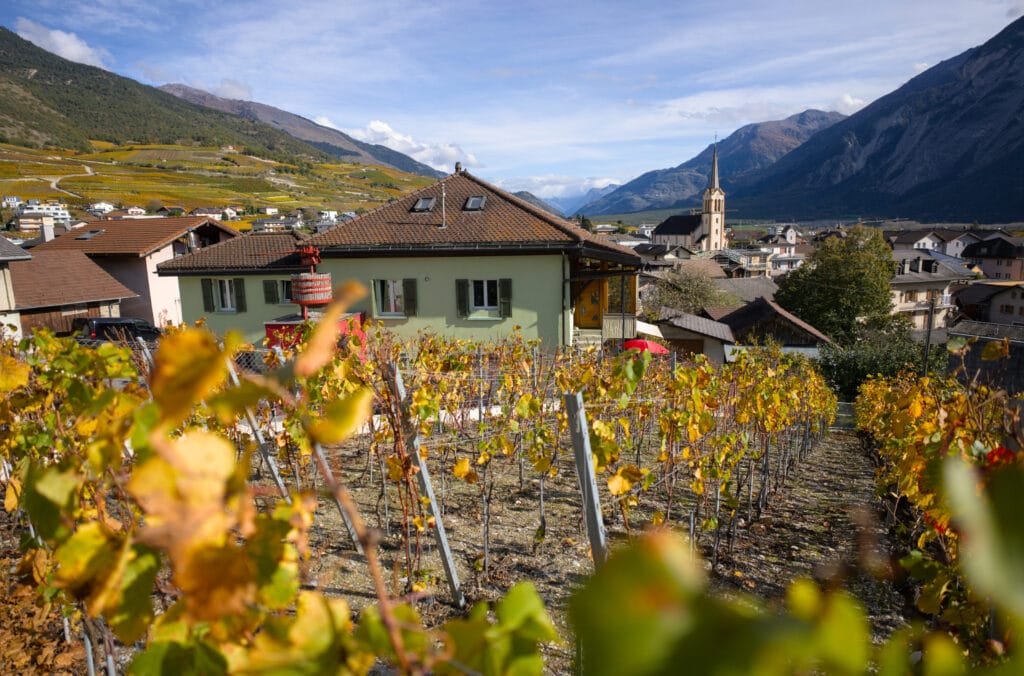
Salgesch, or Salquenen in the French version, is a village that has had wine in its veins for centuries. Incidentally, for a little anecdote, the French name is indeed Salquenen, but the name Salgesch is much more commonly heard. In fact, in Valais (a bilingual canton, just to remind you), it’s quite common for German names to be used alongside their French equivalents. A small example: Viège, or should I say Visp? I don’t know about you, but personally, in my mind, it’s always Visp that comes to mind (pronounced with a German accent haha).
Since the post-war period, Salgesch has gradually shifted from its traditional agricultural roots to become a true winegrowers’ village, particularly a producer of red wine! Today, just over 200 hectares of vineyards spread around the village, cultivated by about forty wineries and wine estates. The inhabitants’ way of life follows the rhythm of the vineyard, through the seasons, from pruning and harvest to cellar tastings.

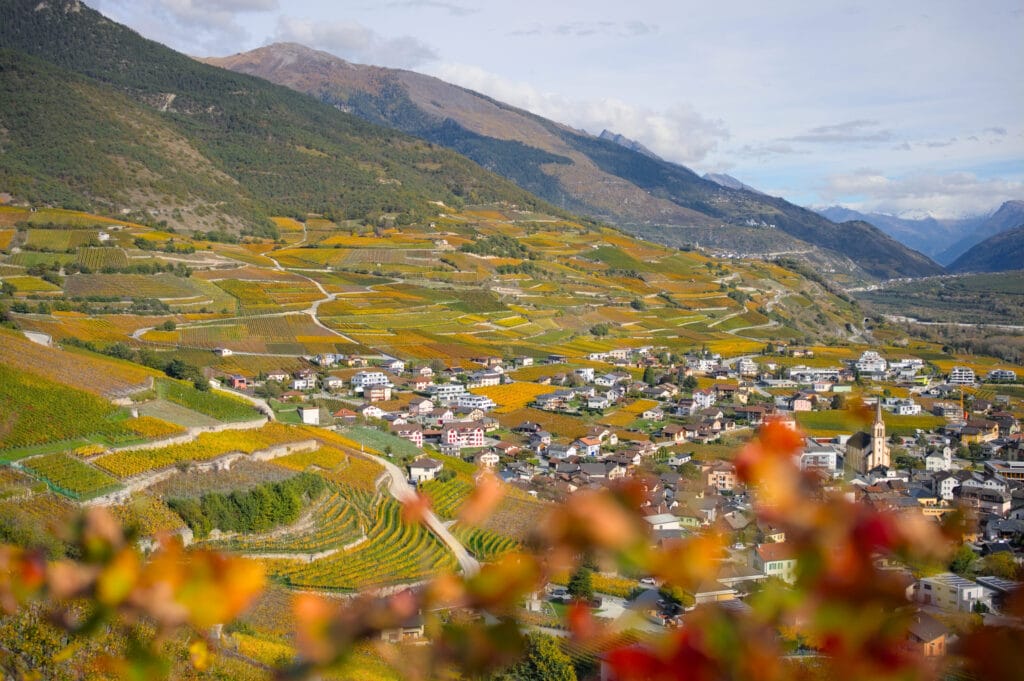
The village itself is really charming! Not very large, so you can explore it fairly quickly, but it’s worth taking your time to linger and admire the few really beautiful houses. The architecture of Salgesch reflects its history: that of a Valaisan village rooted in agriculture, then later focused on wine. You can find typical houses built with both stone and wood.
At the end of the article, you’ll also find a map showing all the cellars in Salgesch so you can plan your visit accordingly (it’s best to aim for days when tastings are available if you want to try the local wines). 😉
The Salqeuenen pinot noir
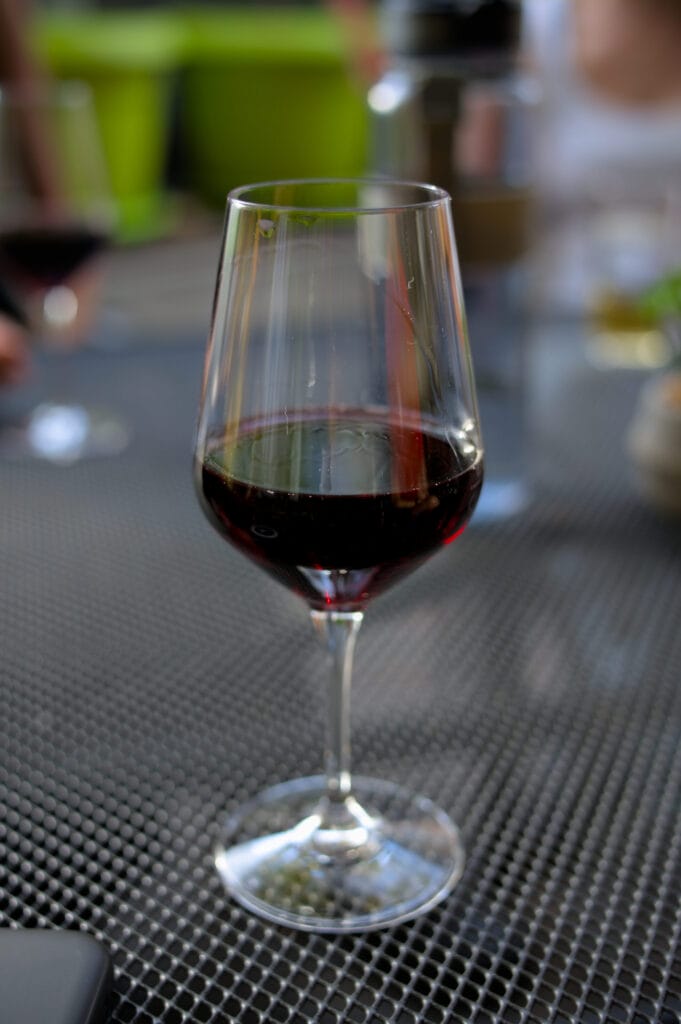
Well, let’s not lie to you… if we knew Salgesch by name, it wasn’t for its architecture but indeed for its Pinot! So beware, many wineries also produce other excellent grape varieties, but it’s true that Pinot Noir is the wine that made this small village famous across Switzerland, and this grape variety accounts for nearly 70% of the production of the 203 hectares of vineyards in the municipality.
The soils around Salgesch are naturally very rich in limestone and magnesium, making it an ideal terrain for cultivating this historic grape variety from Burgundy. Of course, there are other 100% Valaisan specialties stored in the cellars of Salquenen, but if you visit the region, it would be a shame to leave without tasting this one. 😉
Hiking in the vineyards
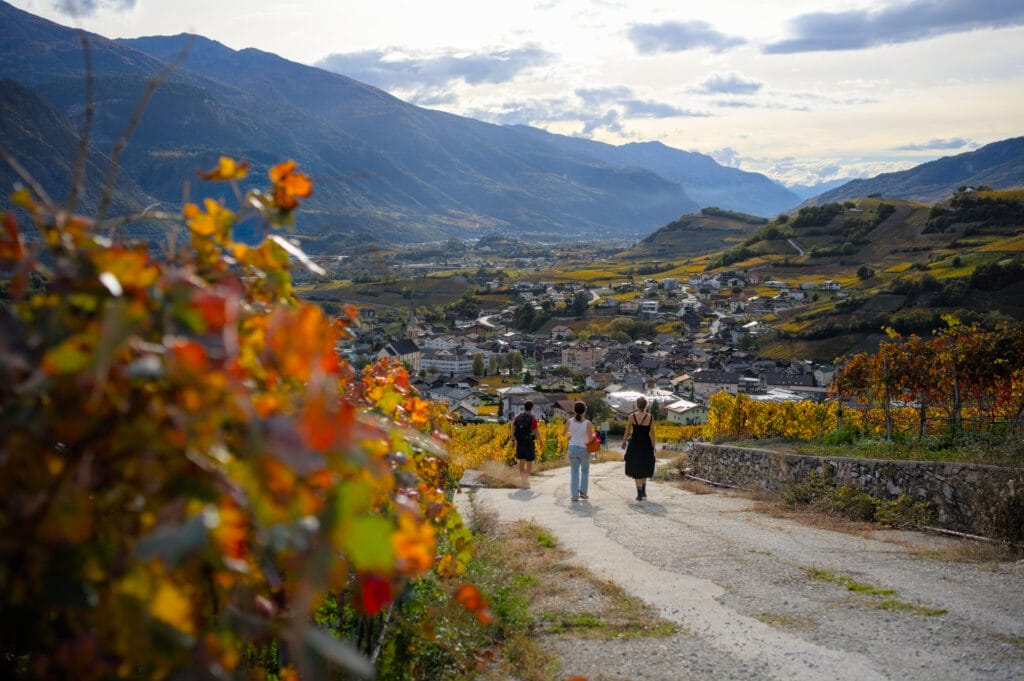
Vineyards have long been a favorite trekking spot of ours. While we still love hiking in the mountains just as much… when we do step away from the peaks, you’ll often find us wandering amidst the grapevines. In fact, if you’re looking for more hiking ideas in the vineyards, we’ve got several options available on the blog:
- Hiking in Lavaux : several itineraries to discover this UNESCO World Heritage vineyard
- The bisse de Clavau (Sion)
- The bisse de Sillonin
Autumn hike in Salgesch
Our little walk today started in the center of Salgesch. After briefly stopping by the wine museum, we headed towards the imposing gate marking the entrance to the “Enfer” (which means hell in French) estate (don’t worry, it’s the name of a vineyard, not literal hell… more like paradise, if you ask for my humble opinion). Anyway, we left the village center just two minutes ago, and we’re already in the middle of the vineyards!
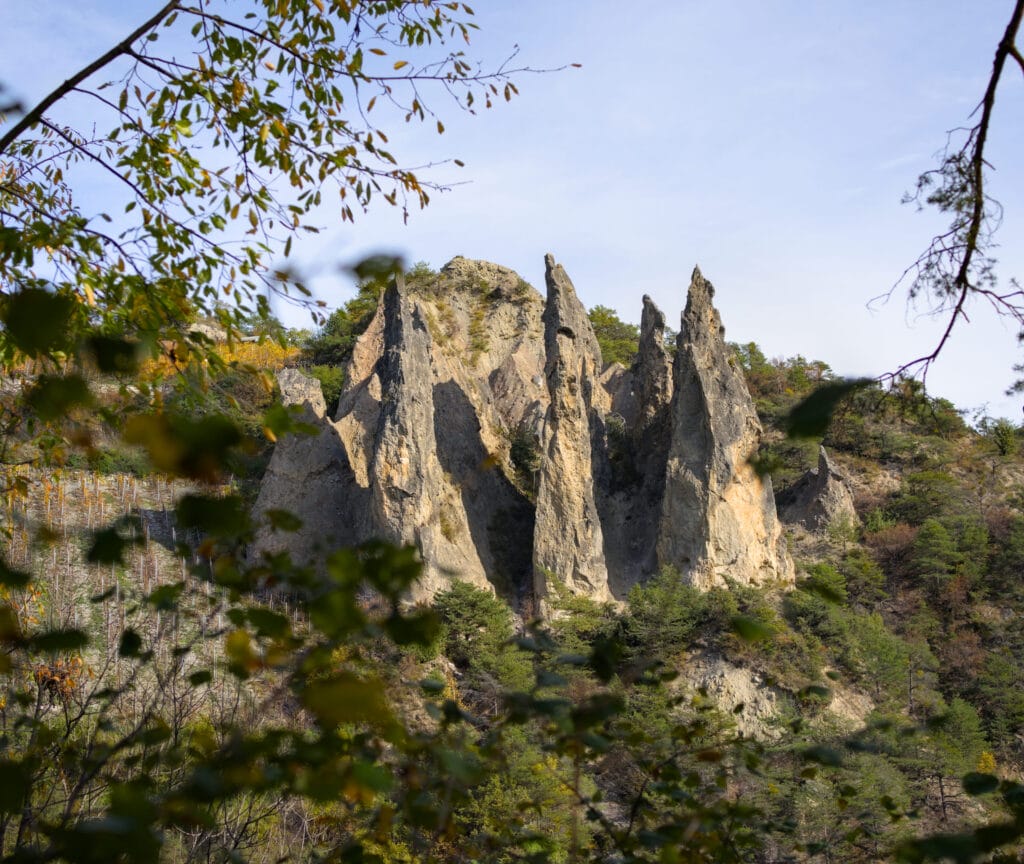
From there, we reached the Raspille. A small stream that has the distinctive feature of marking the linguistic border between German-speaking Upper Valais and French-speaking Central Valais. On the side of the Raspille gorges, we discover a slightly wilder landscape, with impressive rock formations carved by erosion over the centuries. It’s funny because it reminded us a bit of Cappadocia (though on a much smaller scale, let’s be honest). I must admit, we were genuinely surprised by these landscapes!
From Raspille, we briefly headed uphill to take the Marais aqueduct. Back in the day, these canals were used to irrigate vineyards and crops in the drier parts of Valais. Today, the Marais aqueduct is mainly a peaceful walking path that winds between vineyards, woods, and wetlands. And, as is often the case with aqueduct trails, this section is perfectly flat haha.

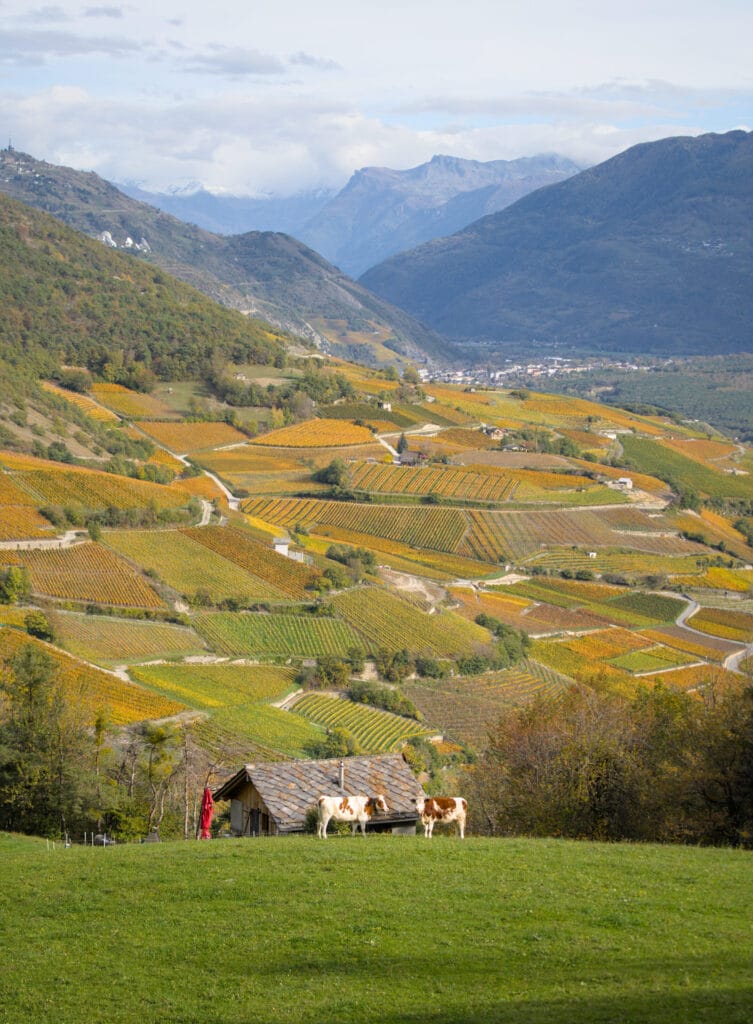
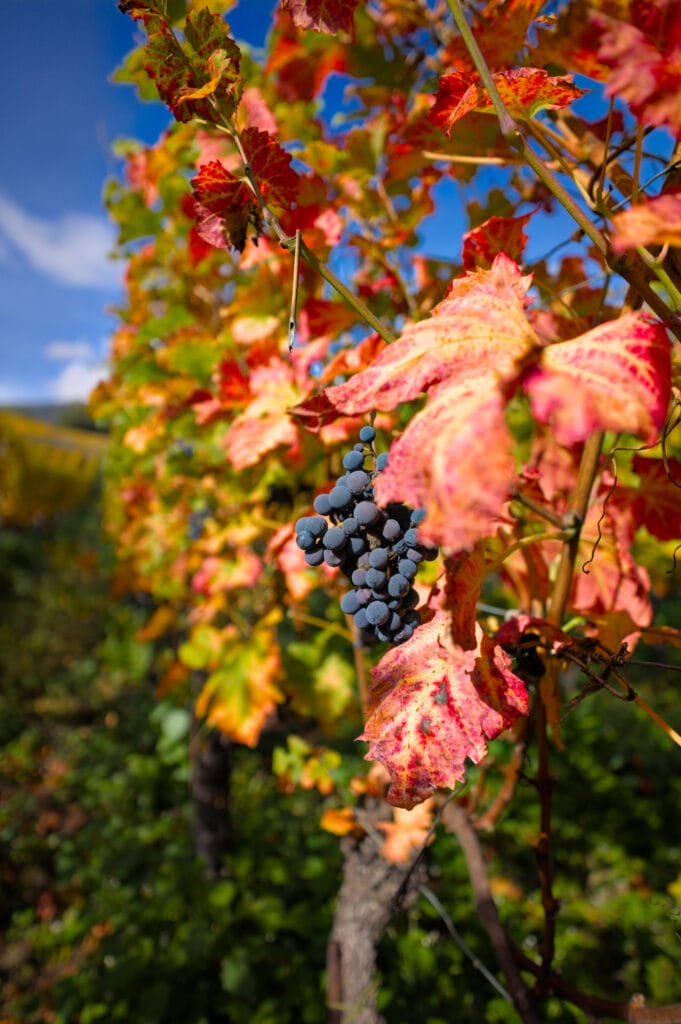
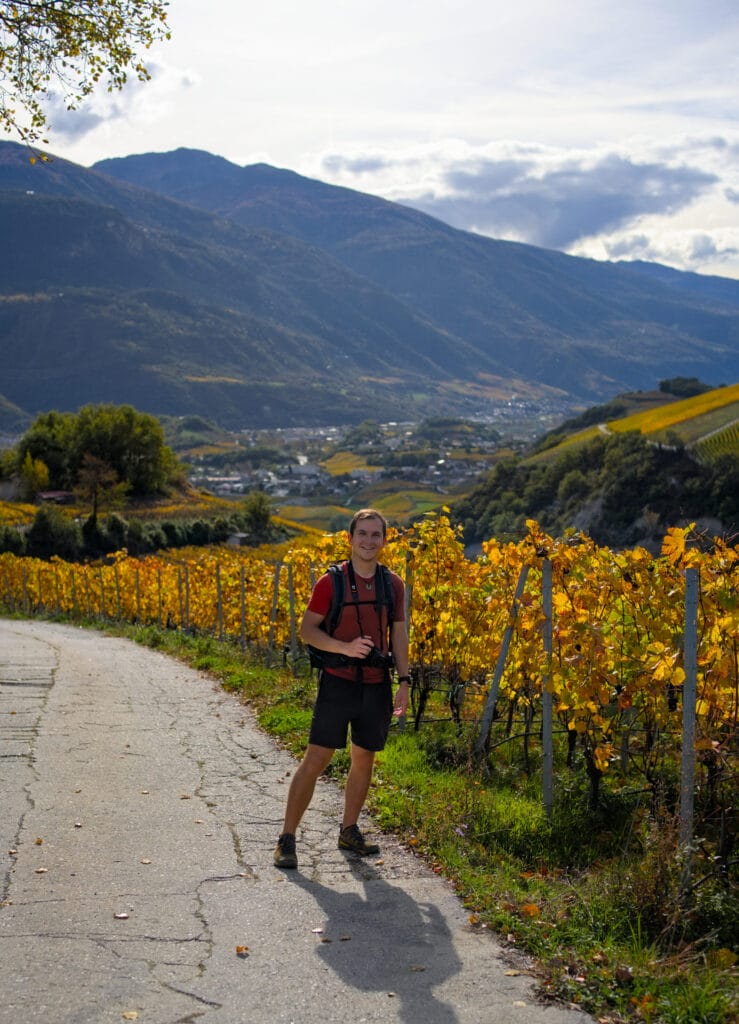
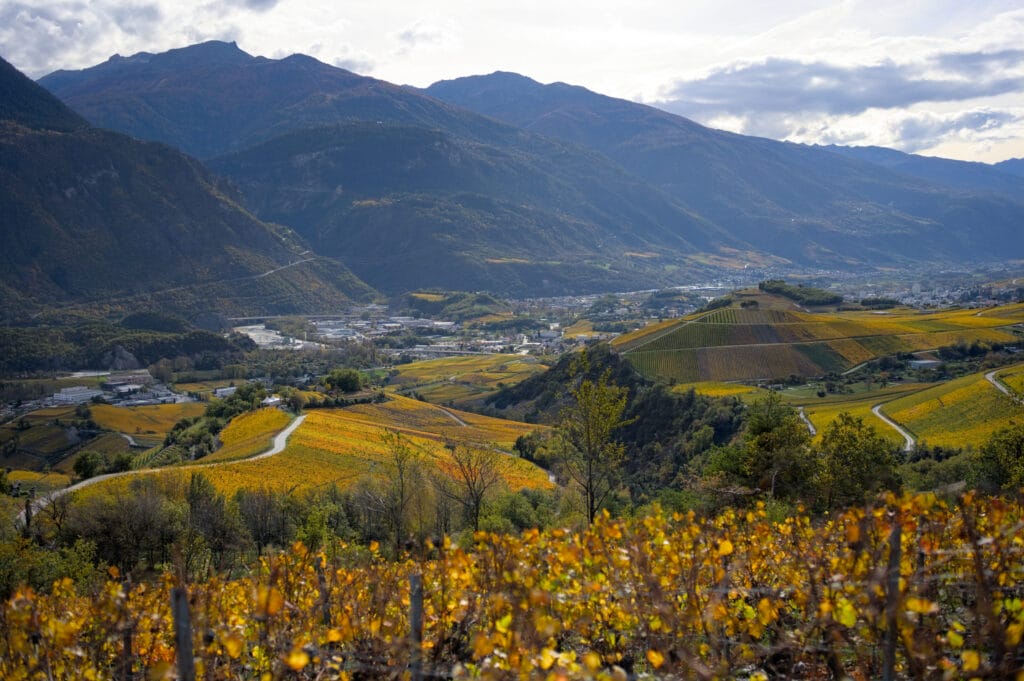
But the section is relatively short. At the gorge (and the small bridge), you connect with trail N°36 (a 74 km marked trail through the Valais vineyards. You can find more details about this route here). Following this trail, you’ll reach the Mengis irrigation canal. Less well-known than the traditional bisses, the Mengis canal follows a more modern route, but it operates on the same principle (mostly used to irrigate the vineyards).
A little further along, we decided to head back down towards Salgesch and enjoy a nice glass of Pinot. But keep in mind, it’s completely possible to extend the walk and stay in the vineyards a bit longer.
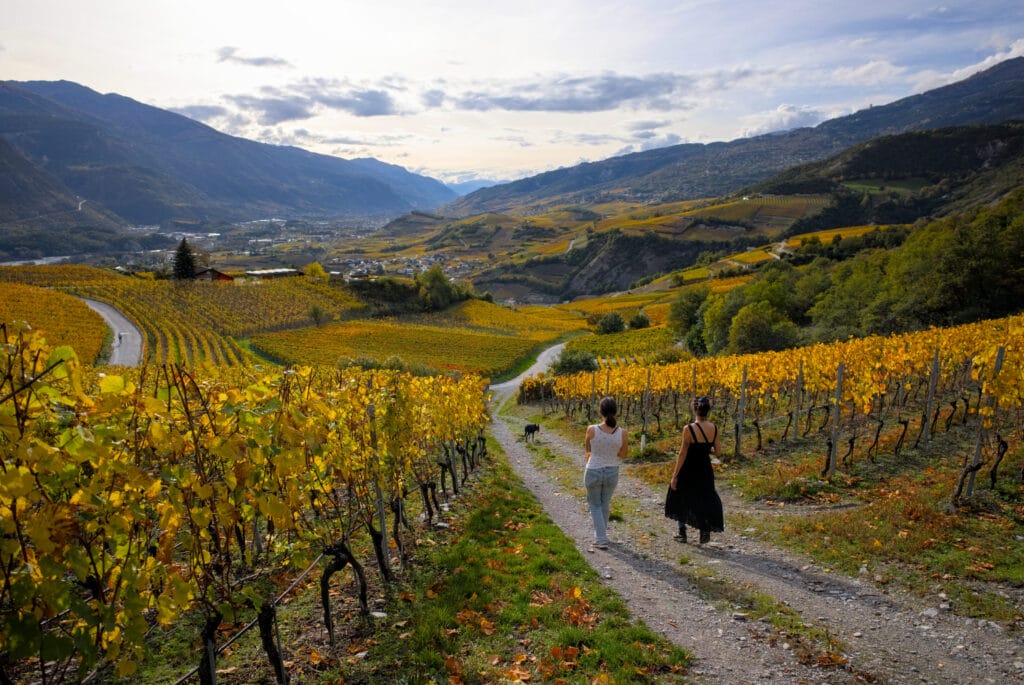
Useful information for the Salgesch wine hike
Our walk started (and ended) in the village of Salgesch (Salquenen). Overall, the loop is 7.3 km with approximately 300 meters of elevation gain. For the walking time, expect around 2 hours.
Regarding the colors, we took this hike at the end of October. But it can vary from year to year. If you’re coming from further away, a way to see how autumn colors are progressing is to check out the Switzerland Tourism color map. The map is linked to webcams so you can get a sense of what it looks like. 😉
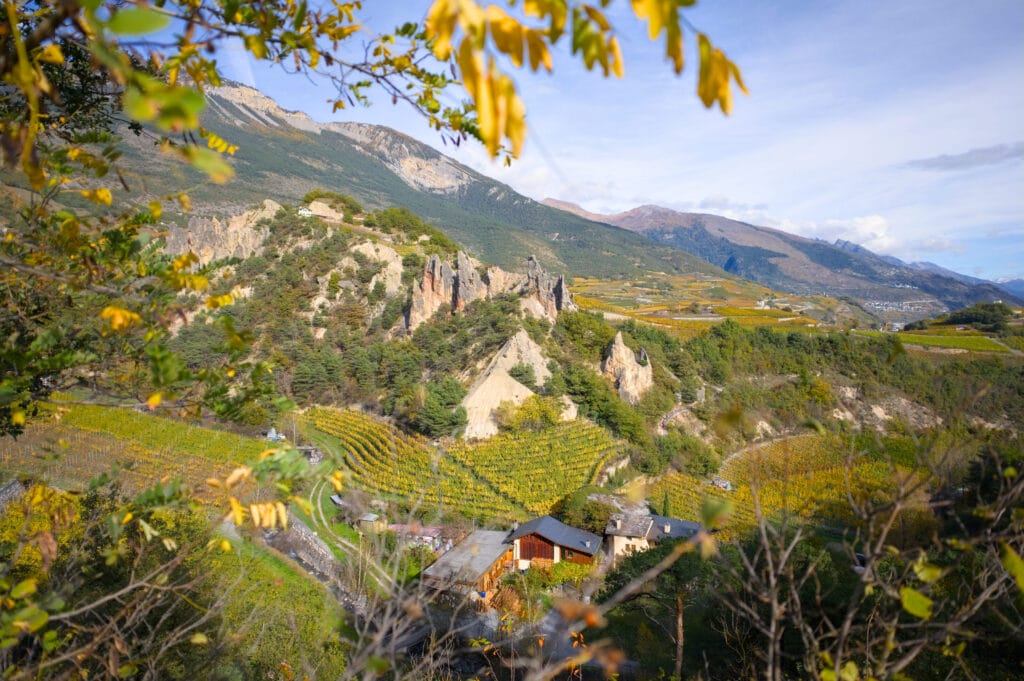
Below, I’ve included the complete map of our itinerary (in red). In yellow, it’s the wine trail that connects Salgesch to Sierre (with over 80 educational signs). It might be fun to combine both if you have the time and to visit the museums.
Visit the wine museum in Salgesch
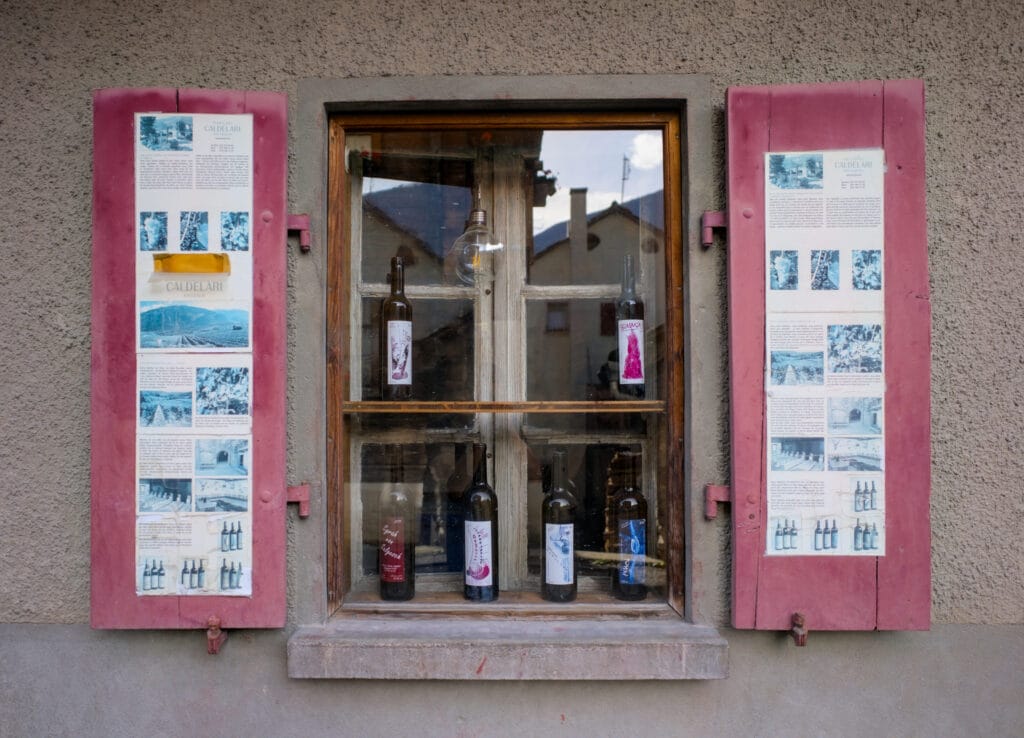
In the heart of the village, the Salgesch Wine Museum offers an immersive permanent exhibit housed in a renovated old winemaker’s house. Across thirteen beautifully staged rooms, the museum traces the journey from grape to glass—covering terroirs, harvests, fermentation techniques, and tasting rituals—in a playful, interactive, and accessible way for visitors of all ages. Admission to the museum costs 10 CHF and also grants access to the temporary exhibition located in Sierre (more details below). The museum is open from early March to late November, Wednesday through Friday from 2 pm to 6 pm, and Saturday and Sunday from 11 am to 6 pm.
While the permanent exhibition is found in Salgesch, Sierre hosts a temporary exhibition from the same museum. In 2025, the exhibition will focus on the Valais region, particularly Valais wines. The Wine Museum enjoys comparing Valais to other wine regions around the world. By the way, did you know that Valais is the largest wine-producing canton in Switzerland, but on a global scale, it’s just a drop of wine in an ocean of vineyards: it covers only 0.06% of the world’s vineyard surfaces and accounts for just 0.15% of worldwide wine production.
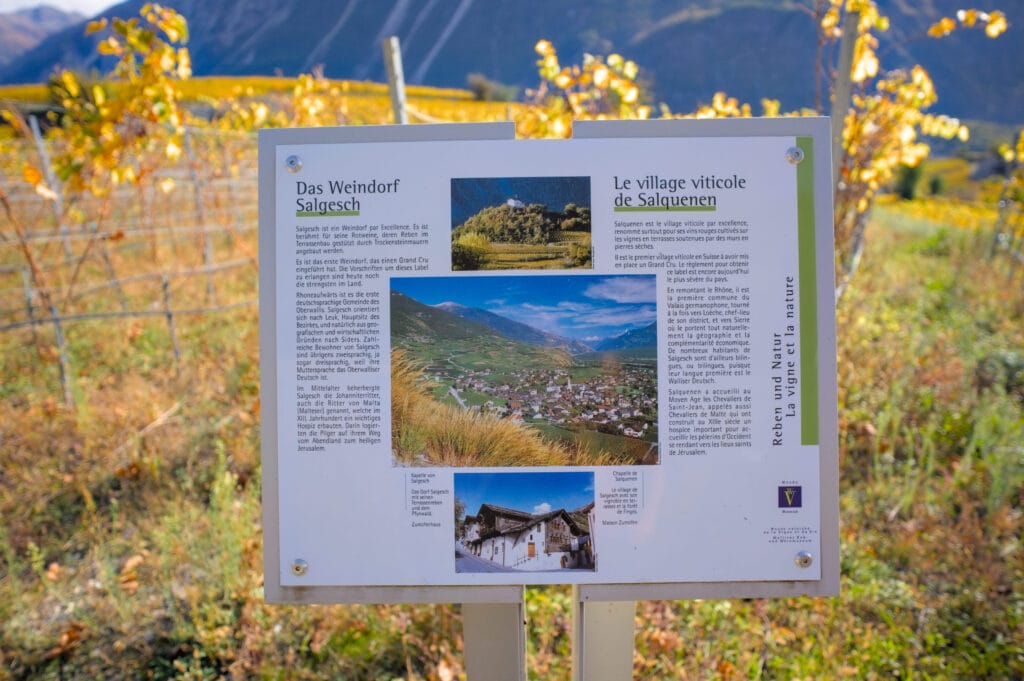
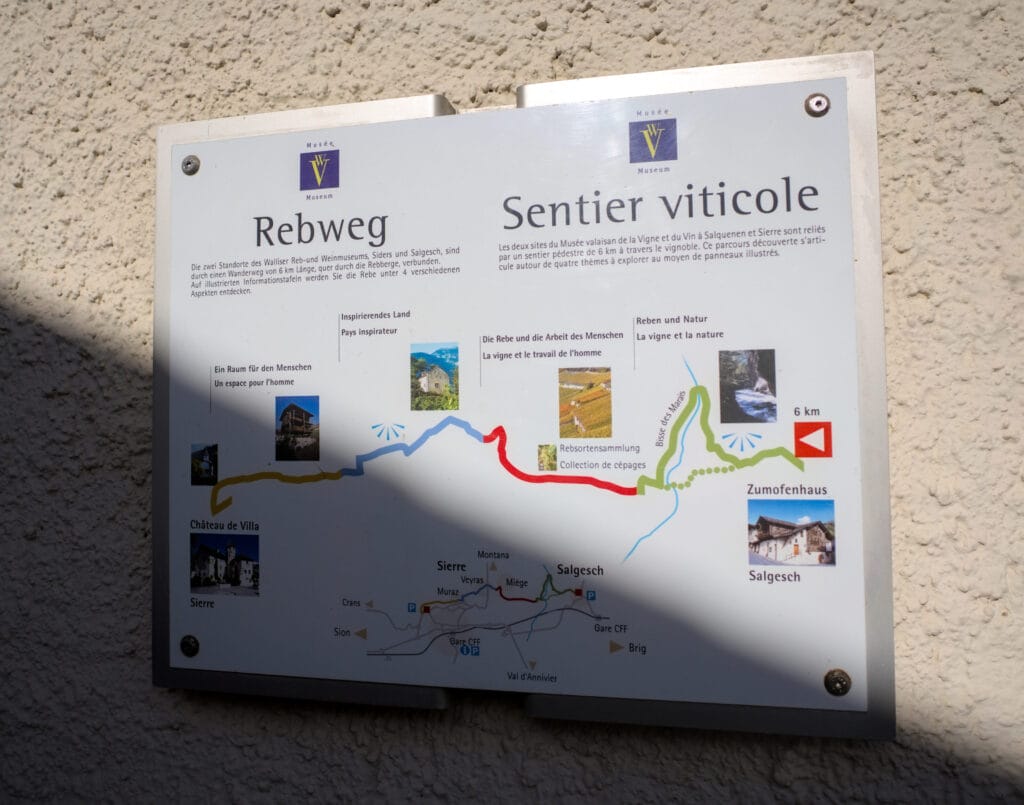
To connect these two places, you can of course take the train, but you also have the option to walk along the Sierre–Salgesch wine trail. About 6 km long, it winds through vineyards and features nearly 80 informational panels about wine production. An original way to hike, and a route that perfectly complements the one described above. At the end of the walk, you can return to your starting point by train (two trains per hour, with a 3-minute journey). You can see the route for this trail on the map above (marked in yellow). NB: by following this path, you’ll officially cross the Valaisan language barrier. 😉 Indeed, while Sierre is still considered predominantly French-speaking, Salgesch is entirely within the German-speaking part of our canton.
The wine Sensorium
Located in the courtyard of Salquenen, the Wine Sensorium is an original place where you can learn more about wine through the five senses. Unfortunately, we didn’t get to visit the space (it was closed when we passed by), but we will definitely try to go there next time! This space, which is freely accessible, allows you to touch, smell, look, taste, and even listen to the wine. Opening hours: Monday to Friday 8:30 AM – 12:00 PM and 2:00 PM – 5:00 PM.
Where to try Salgesch wine? winery list
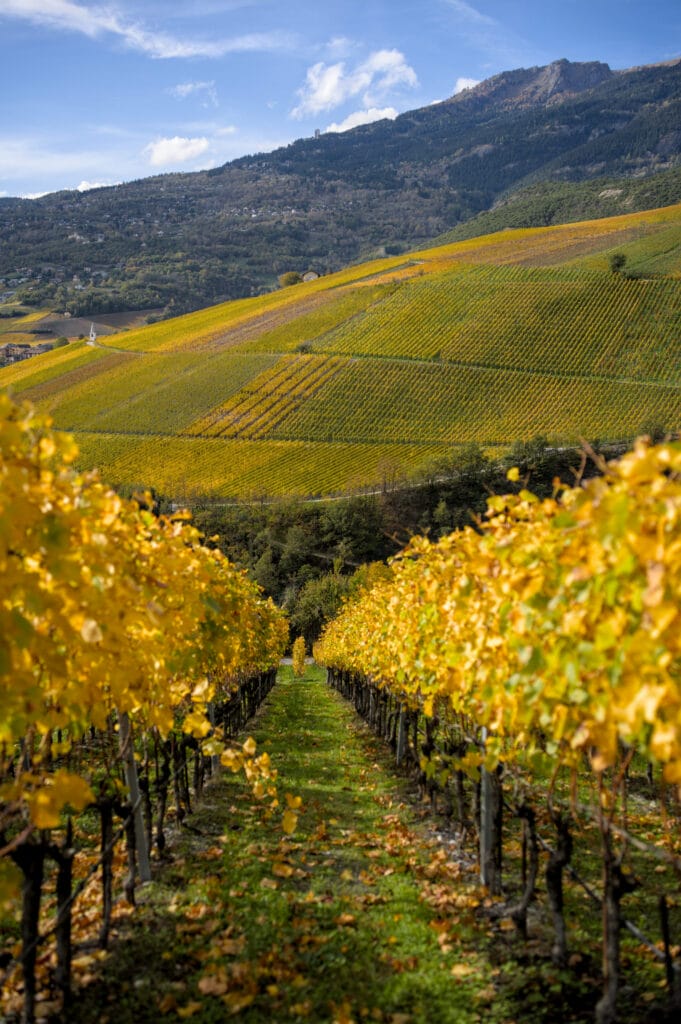
If, at the end of your walk, you’d like to enjoy some wine, there are several options in the village. We visited on a Sunday (such geniuses that we are), so most of the cellars weren’t open, and we ended up on the terrace of the Arkanum Hotel. Honestly, it was very nice— they have several wines from Salgesch on their menu. 😉 By the way, speaking of accommodations, if you’re looking for somewhere in Salgesch, there’s the Arkanum Hotel, but there are also several B&Bs right at the wineries. A really unique and charming option. See accommodations on Booking.
Afterward, if you want to do a tasting, we clearly recommend visiting one or more wineries (or even several the same day 😉 ). The wineries that have a tasting area open to the public (no reservation needed) are the following:
- Cave du Rhodan (Monday to Friday, 9 a.m. to noon and 1:30 p.m. to 5 p.m. and Saturday, 9 a.m. to 3 p.m.)
- La Cave Gregor Kuonen (Monday to Friday, 9 a.m. to noon and 1:30 p.m. to 5.30 p.m. and Saturday, 9 a.m. to 4 p.m.)
- Fernand Cina (Monday to Friday, 9 a.m. to noon and 1:30 p.m. to 5.00 p.m. and Saturday, 9 a.m. to 2 p.m.)
- Adrian Mathier Nouveau Salquenen (Monday to Friday, 9 a.m. to noon and 1:30 p.m. to 5.30 p.m. and Saturday, 9 a.m. to 4 p.m.)
For the other cellars, tastings are generally also available, but you will need to contact them beforehand to make an appointment. Often, tastings are free if you buy wine afterward, or they may cost between 10 CHF and 20 CHF (prices can vary depending on the cellars and the number of wines offered). Below, I’ve provided a map with the main cellars; you’ll find the website link for each one to get more information. Feel free to leave us a comment if you have any suggestions for changes.
That’s it for this lovely stroll through the vineyards of Salgesch. We hope you enjoyed the article and look forward to seeing you again soon for more articles in Valais and beyond. 😉
Pin it
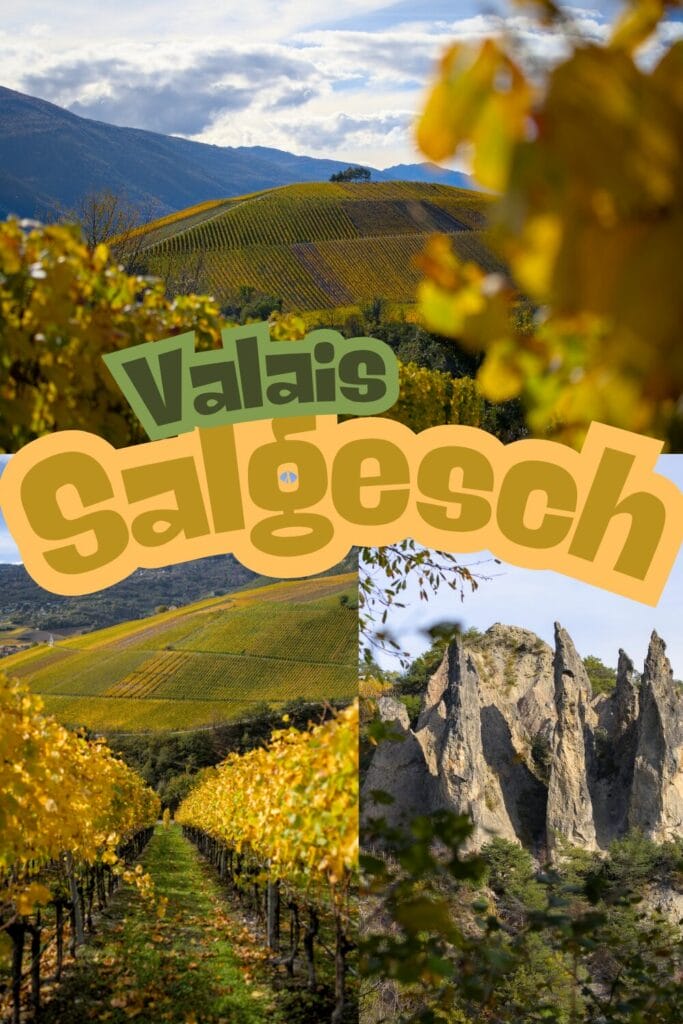
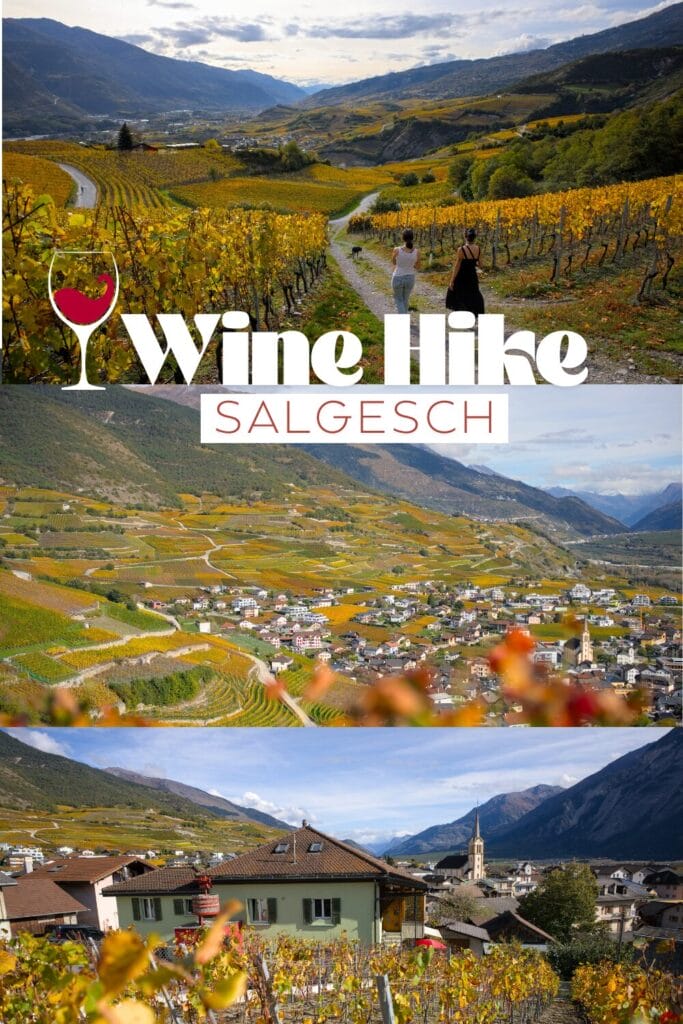
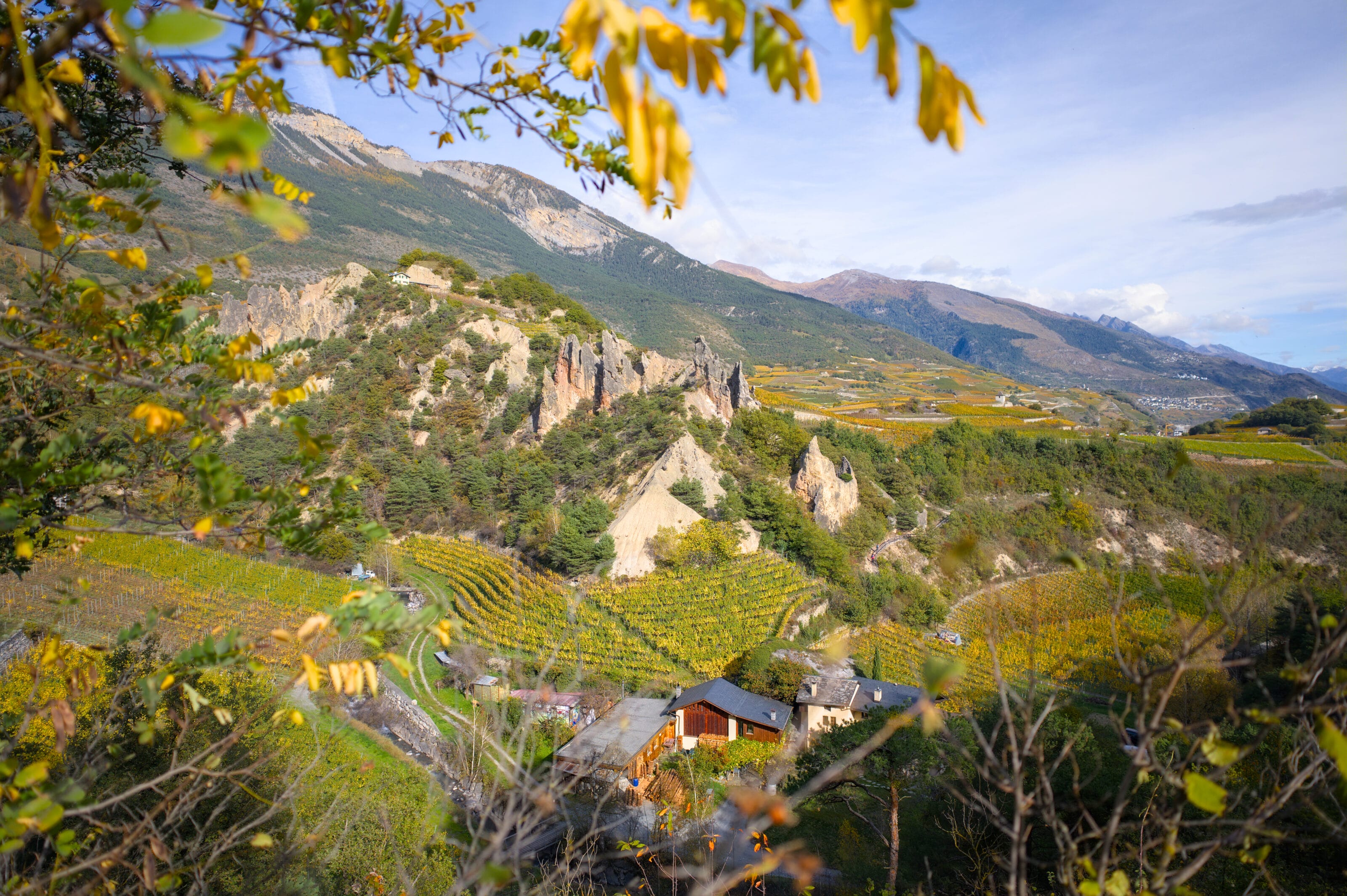
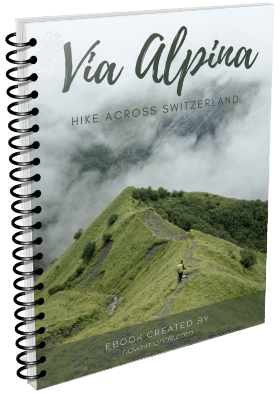
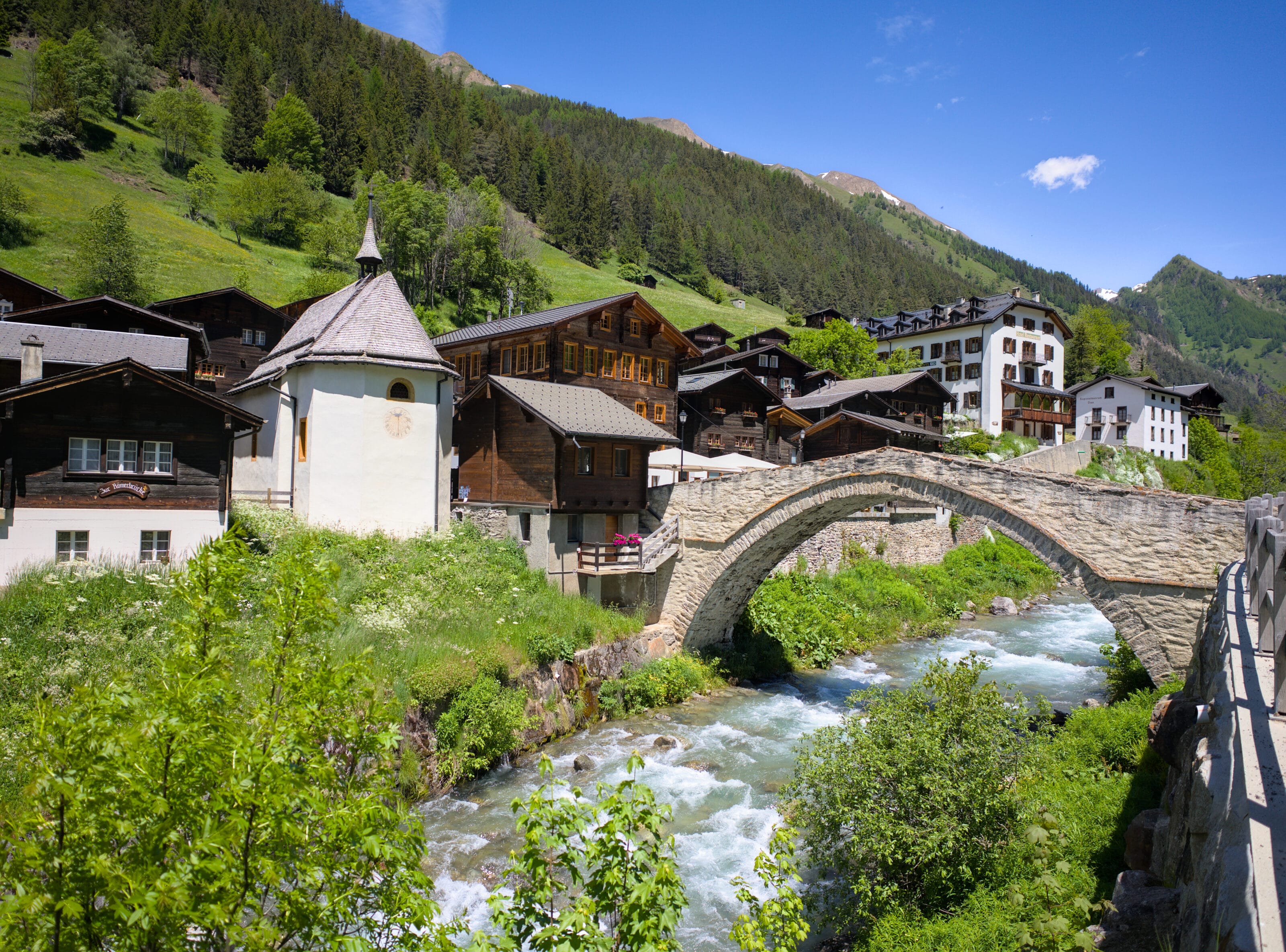
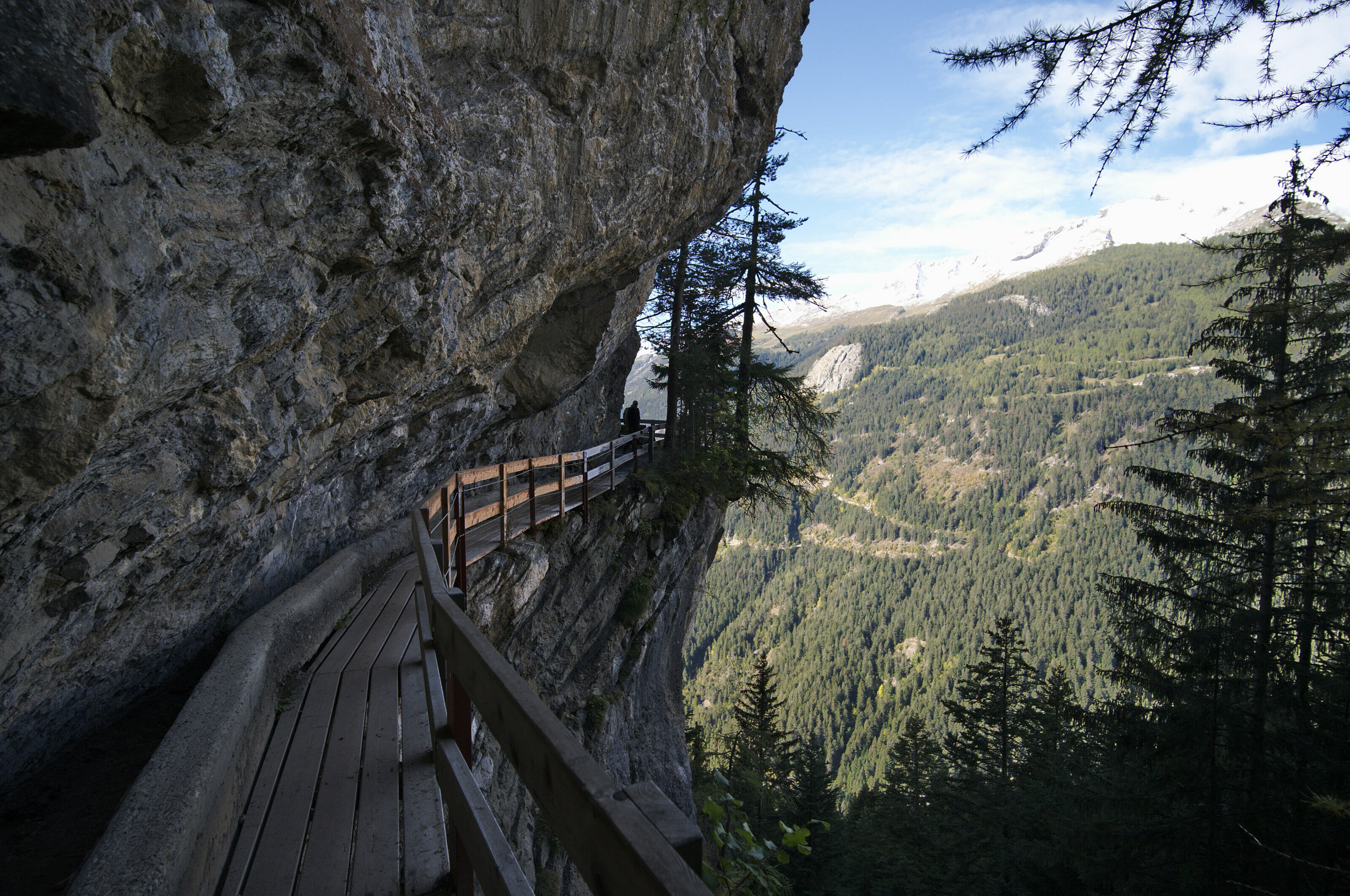
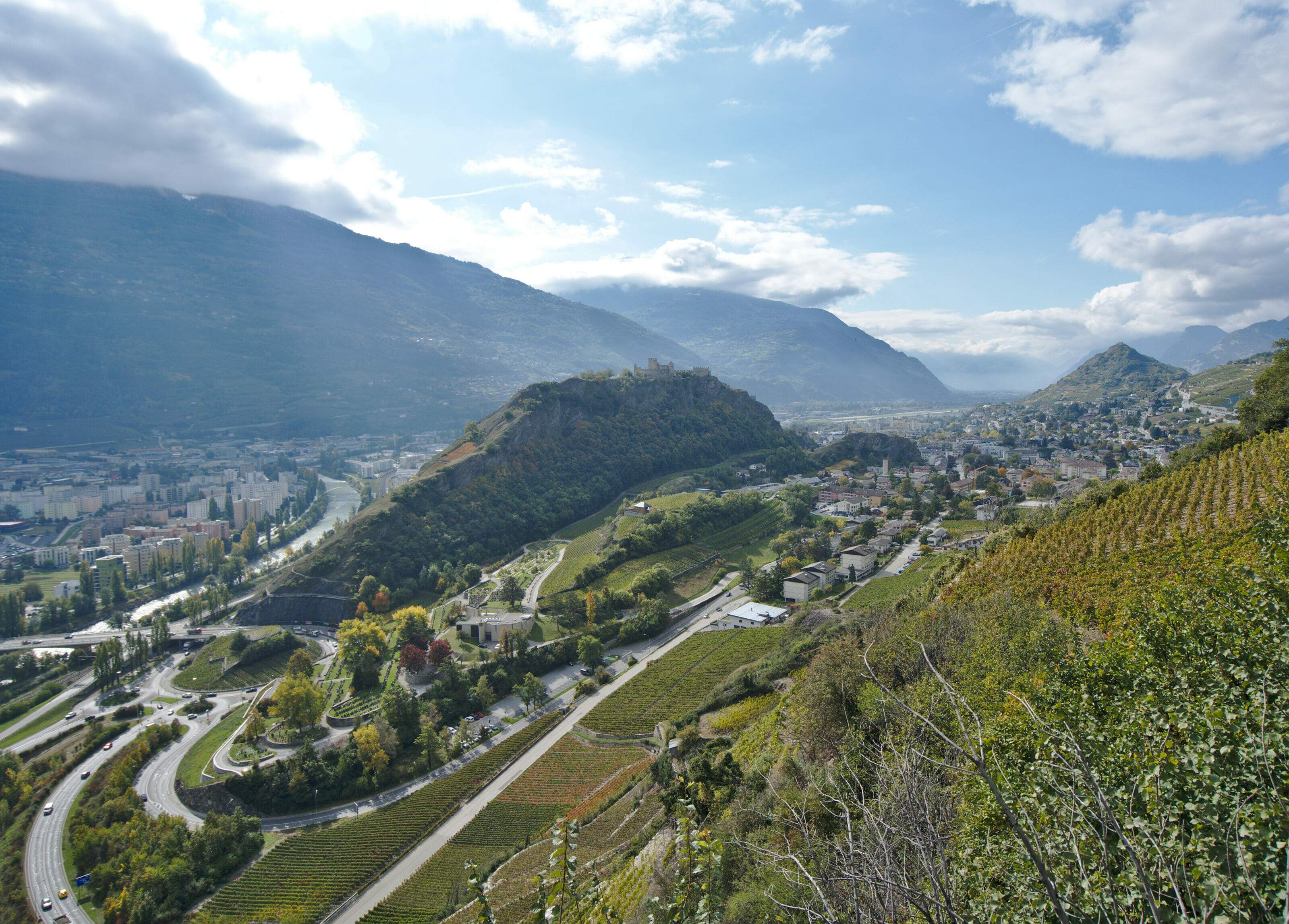
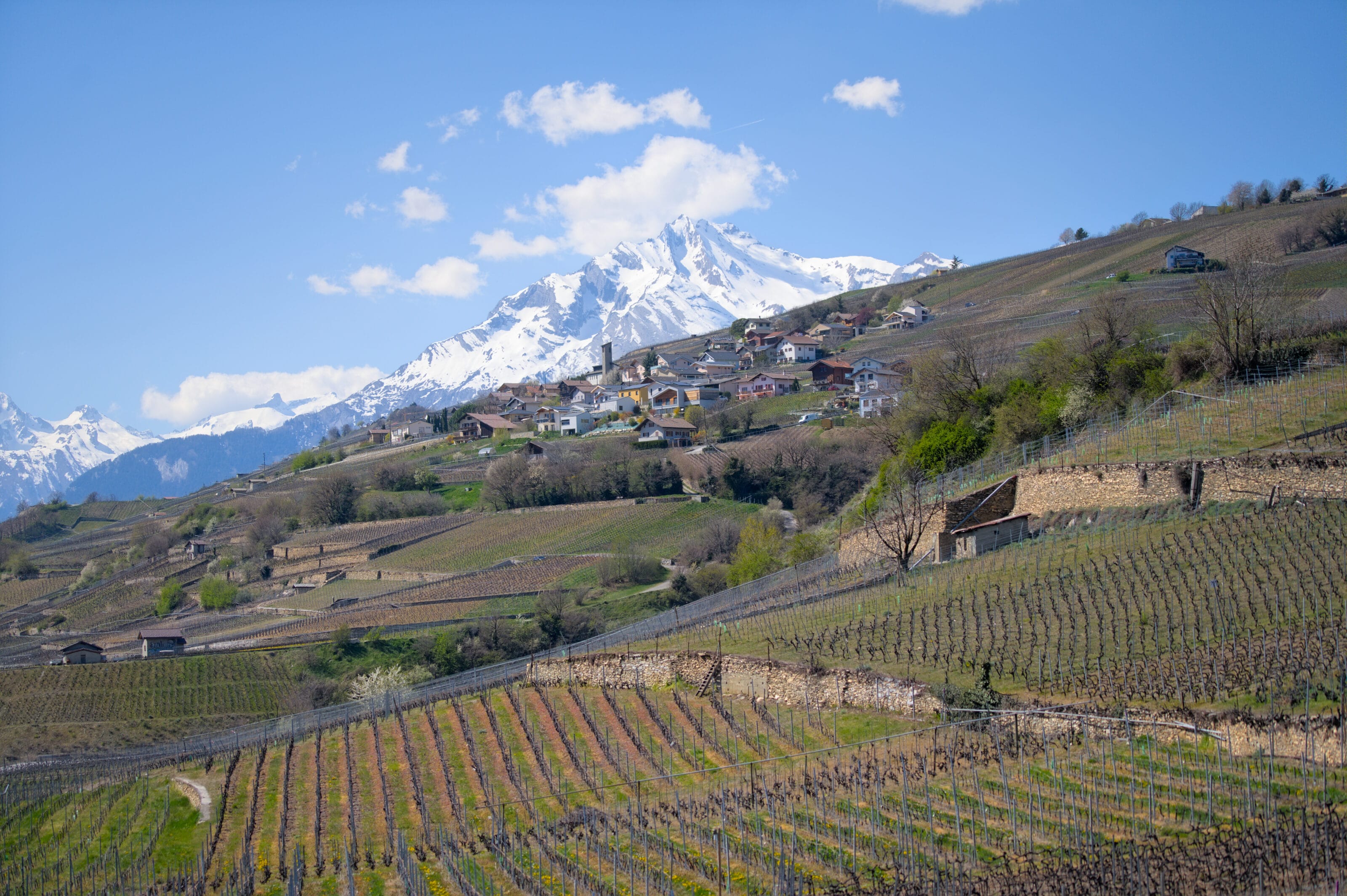
Join the discussion